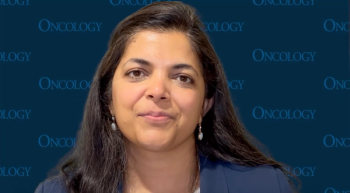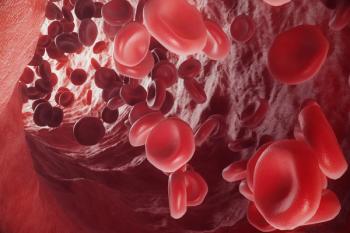
- ONCOLOGY Vol 13 No 3
- Volume 13
- Issue 3
Radiotherapy Versis Chemotherapy as ConsolidativeTreatment for Stage IIIB-IV Hodgkin’s Disease in First Complete Remission or Good Partial Response: A Study of 559 Patients (H89 Protocol)
The role of radiotherapy in combination with chemotherapy in advanced-stage Hodgkin’s disease remains controversial.
The role of radiotherapy in combination with chemotherapy in advanced-stage Hodgkin’s disease remains controversial. Between July 1989 and December 1996, 559 patients less than 66 years of age with stage IIIB-IV previously untreated Hodgkin’s disease were randomized, at diagnosis, to receive six cycles of ABVPP (Adriamycin, bleomycin, vinblastine, procarbazine, and prednisone; group A) or a MOPP/ABV (mechlorethamine, Oncovin, procarbazine, and prednisone/Adriamycin, bleomycin, and vinblastine) hybrid (group B).
Patients in complete remission (CR) or partial remission (PR) ³ 75% after six cycles were then randomized to receive either two additional cycles of the same regimen or radiation therapy: (sub)total nodal irradiation (30 Gy + 5 Gy) to initially involved areas + 5 Gy to the residual mass. Patients not in CR or PR ³ 75% after four to six cycles received intensive salvage therapy with the MINE regimen (mitoguazone, ifosfamide, Navelbine, and etoposide) followed by BEAM (BCNU, etoposide, Ara-C, and melphalan) and autologous bone marrow or peripheral blood stem-cell transplantation.
The analysis was performed on an intention-to-treat basis. Histologic review was achieved in 91% of patients at the date of analysis, and 533 patients were eligible.
Patient characteristics did not differ between the treatment groups: age (median, 32 years), stage (III = 40%; IV = 60%), tumoral mass >10 cm (24%), MT ratio (mass/transverse diameter of the thorax) > 0.45 (9%), bone marrow involvement (20%), number of extranodal sites ³ 2 (27%), anemia (29%), lactic dehydrogenase (LDH) > 1 N (44%).
The CR + PR ³ 75% rate after four cycles was 85% (group A, 85%; group B, 85%) and after six cycles was 86% (group A, 88%; group B, 85%).
A total of 418 patients in CR or PR ³ 75% were randomized to receive consolidative chemotherapy (208 patients) or radiotherapy (210 patients). At a median follow-up of 46 months (range, 8-109 months), 152 patients (28%) had progressed and 90 had died, 43 of Hodgkin’s disease and 47 due to other causes, including solid tumors (7 patients), non-Hodgkin’s lymphoma (NHL; 5 patients), and acute myelocytic leukemia (AML; 1 patient). Three other patients developed secondary AML and are alive without Hodgkin’s disease.
Disease-free survival (DFS) and overall survival (OS) rates were: Cox regression analysis, including the variables of the international prognostic score for advanced Hodgkin’s disease and consolidative treatment, showed a qualitative interaction between induction regimen and consolidative treatment for OS. After ABVPP and radiotherapy, the risk of death was higher than after chemotherapy (relative risk [RR], 4.37; P = .01). After MOPP/ABV, the benefit of radiotherapy was not significant.
CONCLUSION: These results suggest a role of the induction regimen in tumor control. Chemotherapy alone allows the same or a better survival as chemotherapy plus radiotherapy. A longer follow-up and the analysis of fatal events and of salvage from relapse after radiation therapy will be required to arrive at a definitive conclusion.
Articles in this issue
almost 27 years ago
WHO Declares Lymphatic Mapping to Be the Standard of Care for Melanomaalmost 27 years ago
Navelbine Increased Elderly Lung Cancer Patients’ Survivalalmost 27 years ago
Consensus Statement on Prevention and Early Diagnosis of Lung CancerNewsletter
Stay up to date on recent advances in the multidisciplinary approach to cancer.
















































































